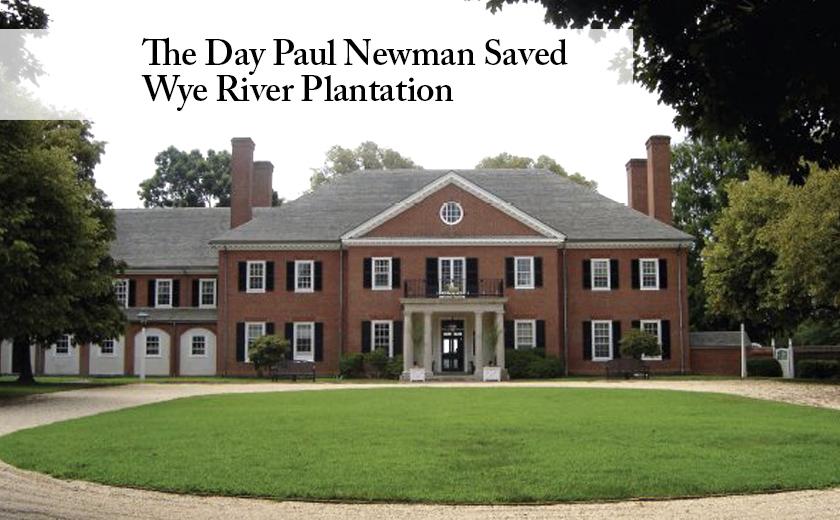It goes without saying that the Wye River Plantation in Queen Anne’s County is one of Maryland’s significant historical landmarks. The home of William Paca, signer of the Declaration of Independence and early governor of the state, this remarkable farm, with almost four miles of waterline, remains intact as one of the most valuable conservation sites on the Mid-Shore.
It also has had a remarkable history well after Governor Paca’s passing.
Purchased in 1939 by Corning Glass heir Arthur A. Houghton, Jr. as a place to raise the endangered Wye Angus cattle and later to house the Wye Institute, the farm would become an essential partner with the University of Maryland for agricultural and conservation research.
Perhaps its most significant era was when Houghton donated the property to the Aspen Institute for its primary East Coast conference center. And for almost 30 years, Aspen became famous for hosting presidents, foreign leaders, international scholars, faculty members from nearby Washington College, and dozens of Fortune 500 CEOs. It also remained the residence for Arthur and his wife Nina, where they entertained the likes of Princess Anne and more recently when Nina made world news by giving sanctuary to six-year-old Cuban refugee Elian Gonzalez in 1999.
Given this impressive background, it was of no small interest to the Mid-Shore community when it was announced a few years ago that Aspen would be closing down the Wye campus. Almost immediately, there were concerns about who might take over the site, with the worst fear that it might fall into the hands of the wrong developer.
One of the most worried about Wye’s future was Jeff Horstman. With both his step-father and mother now deceased, the founding executive director of ShoreRivers, assumed the role of the family’s lead representative in working with Aspen to ensure the future protection of the farm.
And over the last few years, several non-profit organizations and small LLC firms have expressed interest in the site, but for a variety of reasons, a fix failed to materialize, which left the principals feeling real pressure to find a solution. That’s when Paul Newman saved the day.
While Paul himself has indeed passed away, his brainchild, the Hole in the Wall Gang Camp (think Butch Cassidy and the Sundance Kid), did come knocking serendipitously.
The Hole in the Wall Gang Camp in Connecticut was Paul Newman’s most beloved of the dozens of organizations he supported through his “Newman’s Own” profits. Born with the specific mandate to provide “a different kind of healing” to children with serious illnesses and their families, it began as a summer camp in 1988 and it now serves over 20,000 children and parents yearly with year-long programming and outreach.
Based on this remarkable success, the Hole in the Wall Gang Camp saw a real opportunity to serve the Mid-Atlantic region in the same successful way they had reached so many New England kids. At the same time, Horstman and the Aspen Institute saw a partner dedicated to doing good things and sharing the ecological values that the Houghton family had embraced.
The Spy recently talked to Jeff and Hole in the Wall Gang Camp CEO Jimmy Canton and it’s Chief Strategy Officer Pádraig Barry about the remarkable new partnership, the legacy of Paul Newman, and the famed actor’s insistence that the Camp be financially self-sufficient by limiting the revenue coming from pasta sauce to only about 1% from the foundation.
This video is approximately seven minutes in length. For more information about The Hole in the Wall Gang Camp please go here.



Robin Burton says
So nice to see the plantation preservation in tact.Ive lived on the eastern shore all of my life and later employed as Mrs Eleanor Miles private care giver
Kathleen James-Chakraborty says
Some people may remember that Newman was a presence at Washington College when his son Scott was a student there. I hope that they can use the buildings where the Wye Institute Camp used to be.